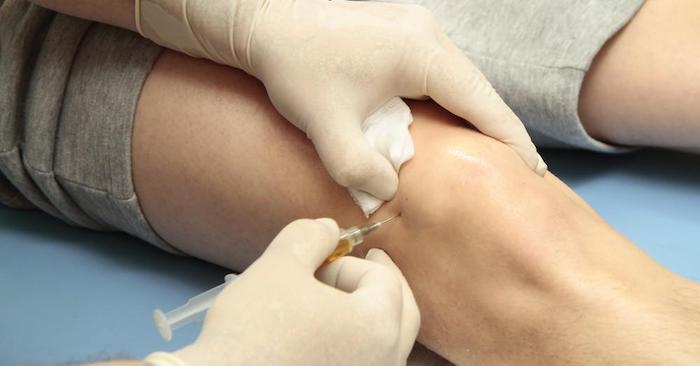
Regenerative treatments like platelet-rich plasma (PRP) therapy are rising in popularity. They are not only helping people who are suffering from hair loss but are also providing relief to individuals who are living with constant joint pain. An extremely common condition, joint pain can be debilitating for both men and women. There are many reasons why some men and women suffer from joint pain — arthritis, gout, sprains, or other injuries can cause damage to joints that interfere with our daily movements. When individuals dealing with joint pain want to avoid invasive surgeries like joint replacement, new treatments such as PRP therapy may provide the relief they are looking for.
But First–What Causes Joint Pain?
Our joints are an important part of our overall anatomy. They are the connections between our bones that allow us to move, providing structural support to our exoskeleton. When the joints are damaged or riddled with arthritis, it can interfere with our daily movements and cause severe pain. In a national survey, about 1/3 of adults say they deal with daily joint pain. This can be anything from knee pain, which is the most common, to hip or shoulder pain. Joint pain can even occur in the hands, feet, or ankles. Mild or severe joint pain can affect a person’s quality of life, so alternative treatments like PRP therapy can be a helpful solution.
What Is PRP Therapy?
Men and women who are dealing with mild joint pain typically turn to over-the-counter pain medications like Advil or Tylenol to keep it under control. However, if joint pain becomes persistent and more severe due to issues like joint inflammation and swelling, individuals may need to seek other alternative treatments.
Our blood carries a material known as plasma that is rich with regenerative components like platelets that assist the body to naturally heal or repair damaged tissue like our joints. PRP, or platelet-rich plasma, therapy uses a person’s own rich plasma agents to build areas back up where joints are diseased or injured. This regenerative therapy treatment is giving joint pain suffers an alternative way to stay more active without pain and the need for joint replacement surgery.
How Does PRP Therapy Work?
So, you might be saying to yourself that you have heard about this kind of treatment for hair loss, which is correct. PRP therapy has been shown to help with hair loss and allow hair to regenerate, eliminating bald or thinning areas for both men and women. PRP therapy is also known as a regenerative treatment for joint pain. The platelets in our blood supply are a healing agent made up of proteins that promote growth. This growth factor promotes cell growth and blood vessel formation which helps the body heal. PRP therapy involves injecting a patient’s own rich platelet supply of plasma directly into their joints in order to reduce pain, stiffness, and in some instances, repair damaged cartilage.
The PRP Therapy Process
This easy, straightforward therapy treatment can give patients joint pain relief. PRP therapy requires no general anesthesia and just a simple blood draw in order to create the PRP to be injected back into the body. The patient’s blood is put into a centrifuge to process and separate the rich plasma platelets. When ready, it is injected into the problem area such as the knees, shoulders, or ankles to alleviate pain and discomfort.
PRP Results & Recovery
Even though patients can immediately return to their daily activities, the PRP results may take a few weeks for the healing and regrowth to be fully noticed. Typical results of PRP therapy involve patients noticing reduced stiffness in the target joint as well as significantly less pain or discomfort. Platelet-rich plasma therapy has been a major player in regenerative treatment therapy for joint pain. With regular maintenance treatments, patients can forgo invasive surgery and live pain-free.
Precision Pain Care and Rehabilitation has two convenient locations in Richmond Hill – Queens and New Hyde Park – Long Island. Call the Richmond Hill office at (718) 215-1888, or (516) 419-4480 for the Long Island office, to arrange an appointment with our Interventional Pain Management Specialist, Dr. Jeffrey Chacko.













